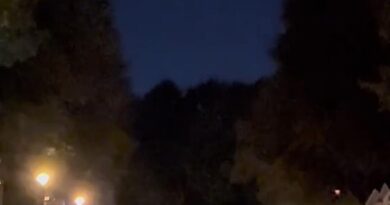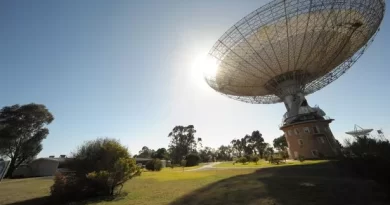Space news weekly recap: Artemis 1 landing, Pentagon UFO investigation and more
Last week was a big one for space enthusiasts as NASA’s Artemis 1 returned to Earth, marking the end of a mission that is the first in a series of increasingly difficult missions that will see mankind return to the Moon. Read about the Artemis 1 touchdown and the other big space news of the week in our weekly recap.
Artemis 1 splashdown
NASA’s Artemis 1 spacecraft splashed down off the Baja coast near Guadalupe island in the Pacific Ocean at 11.10 PM IST on December 11. The mission was launched at 12.17 PM IST on November 16 from the Kennedy Space Center in Florida. After splashdown, Orion was secured inside the US Navy ship USS Portland.
Since then, the spacecraft has been offloaded at the US Naval Base in San Diego, where it is being prepared to be transported to the Kennedy Space Center, where its journey began. Once it arrives at Kennedy, engineers will take out its heat shield and other elements and analyse them to see whether the spaceship has worked well enough to carry humans during upcoming Artemis missions.
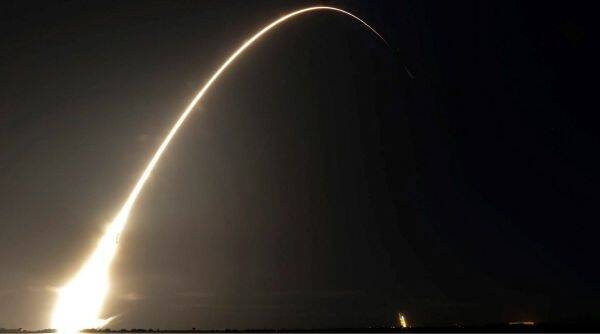 This time exposure photo shows a SpaceX Falcon 9 rocket, with a payload including two lunar rovers from Japan and the United Arab Emirates, launching from Launch Complex 40 at the Cape Canaveral Space Force Station in Cape Canaveral, Fla., Sunday, Dec. 11, 2022. (AP Photo/John Raoux)
This time exposure photo shows a SpaceX Falcon 9 rocket, with a payload including two lunar rovers from Japan and the United Arab Emirates, launching from Launch Complex 40 at the Cape Canaveral Space Force Station in Cape Canaveral, Fla., Sunday, Dec. 11, 2022. (AP Photo/John Raoux)
First private lunar lander launched
Tokyo-based ispace’s Hakuto lunar lander blasted off atop a SpaceX rocket on December 11, along with a payload that contains the United Arab Emirates’ first lunar rover. The hakuto lander is taking a slow, low-energy path to the Moon so that it uses minimal fuel. It will travel nearly 1.6 million kilometres away from Earth before looping back and intersecting with the Moon by the end of April.
To put that in context, NASA’s Orion crew capsule took five days to reach the Moon. The ispace lander will aim for the Atlas crater in the northeastern section of the Moon’s near side. The crater measures more than 87 kilometres across and is just over 2 kilometres deep
 A supernova remnant in the Large Magellanic cloud is visible here. (Image credit: NASA/ESA and The Hubble Heritage Team (STScI/AURA))
A supernova remnant in the Large Magellanic cloud is visible here. (Image credit: NASA/ESA and The Hubble Heritage Team (STScI/AURA))
Algorithm classifies 1,000 dying star explosions
Astronomers at Caltech have developed a machine learning algorithm that was able to successfully classify 1,000 supernovas caused by the explosion of dying stars. The algorithm is called SNIAscore and it was applied to data captured by the Zwicky Transient Facility (ZTF), which is a sky survey instrument at the Palomar observatory in San Diego.
The sheer volume of data being collected by facilities like ZTF means that astronomers can’t possibly sort through all the data on their own. This is where SNIAscore comes in. It can parse through this data and give astronomers alerts, which they can then use to further investigate the galactic objects in question.
Advertisement
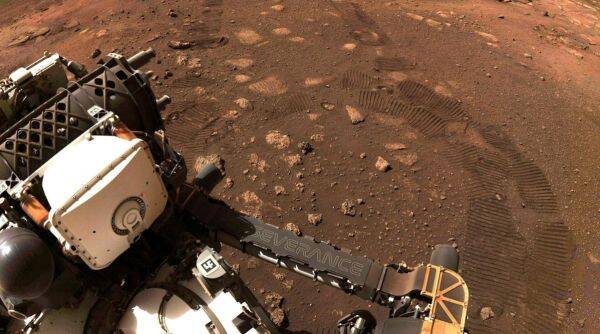 This photo made available by NASA was taken during the first drive of the Perseverance rover on Mars on March 4, 2021. A NASA rover on Mars by chance had its microphone on when a whirling tower of red dust passed overhead and caught the sound. Scientists released the first-of-its-kind audio Tuesday, Dec. 13, 2022. (NASA/JPL-Caltech via AP, File)
This photo made available by NASA was taken during the first drive of the Perseverance rover on Mars on March 4, 2021. A NASA rover on Mars by chance had its microphone on when a whirling tower of red dust passed overhead and caught the sound. Scientists released the first-of-its-kind audio Tuesday, Dec. 13, 2022. (NASA/JPL-Caltech via AP, File)
First audio of Martian dust devil
By chance, the Perseverance Mars rover’s microphone was on when a whirling tower of dust passed directly over it. The 10-second long audio released by NASA last week is the first-ever recording of a dust devil on the red planet. The audio features the rumbling of winds with speeds up to 40 kilometres per hour and the pinging of hundreds of dust particles as they crash into the rover.
The recording sounds quite similar to dust devils on Earth but it is much quieter since the thin Martian atmosphere makes for muted sounds and less forceful wind, according to AP. Since the rover’s SuperCam microphone is turned on for less than three minutes every few days, researchers say it was “just luck” that the dust devil passed by at the right time on September 27, 2021, when the audio was recorded.
 This undated handout photo taken by Russian cosmonaut Sergei Korsakov and released by Roscosmos State Space Corporation shows a Soyuz capsule of the International Space Station (ISS) (Sergei Korsakov, Roscosmos State Space Corporation via AP)
This undated handout photo taken by Russian cosmonaut Sergei Korsakov and released by Roscosmos State Space Corporation shows a Soyuz capsule of the International Space Station (ISS) (Sergei Korsakov, Roscosmos State Space Corporation via AP)
Russian spacecraft leak on ISS
Spacewalks from the International Space Station had to be suspended after a coolant leak was detected on a Russian Soyuz spacecraft docked to the International Space Station. Russian space agency Roscosmos later announced that this leak could have been caused by a micrometeorite strike.
Advertisement
Micrometeorites, most of which are small as a grain of sand are a normal part of the space environment and usually cause little or no damage to the ISS and other spacecraft, which are protected by advanced shielding. But the leak that happened raises questions about whether the Soyuz spacecraft will be able to return with astronauts.
 This Webb telescope image reveals a universe full of galaxies in unprecedented detail and exquisite depth. (Image credit: NASA, ESA, CSA, A. Pagan (STScI) & R. Jansen (ASU))
This Webb telescope image reveals a universe full of galaxies in unprecedented detail and exquisite depth. (Image credit: NASA, ESA, CSA, A. Pagan (STScI) & R. Jansen (ASU))
Webb captures ‘Galactic diamonds’ and newborn stars
NASA’s James Webb Space Telescope captured what is one of the first medium-deep wide-field images of the universe. Medium-deep refers to the faintest objects that can be seen in the image, which are about one billion times fainter than what can be observed with the naked eye. The image is from the Prime Extragalactic Areas for Reionization and Lensing Science (PEARLS) program and contains some of the faintest galaxies ever observed.
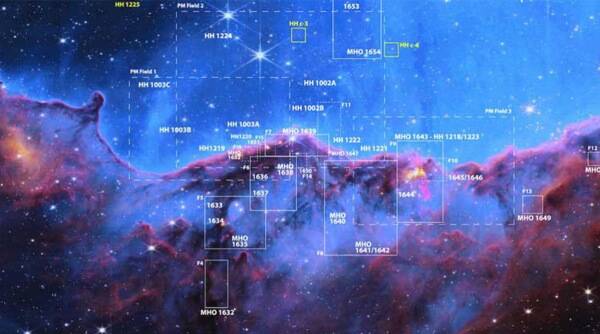 The newborn stars were found in the NGC 3324 region of the Carina Nebula in the image taken by the James Webb Space Telescope. (Image credit: NASA, ESA, CSA and STScI)
The newborn stars were found in the NGC 3324 region of the Carina Nebula in the image taken by the James Webb Space Telescope. (Image credit: NASA, ESA, CSA and STScI)
Some of the first images captured by Webb also came into focus once again this week as scientists were able to use data from the image of the “cosmic cliffs” captured by the telescope to confirm the existence of a dozen previously undiscovered newborn stars.
 Curiously, the patterns were only visible on the south sides of the craters. (Image credit: NASA/JPL-Caltech/UArizona)
Curiously, the patterns were only visible on the south sides of the craters. (Image credit: NASA/JPL-Caltech/UArizona)
Curious martian patterns
NASA’s Mars Reconnaissance Orbiter captured an image of the northern plains of Arabia Terra on the red planet. This image depicts craters containing what looks like mysterious deposits with interesting shapes and distribution.
The deposits have horizontal laminations that could be terraces or layers and also have radial striations that are formed by bright ridges. Interestingly, they can only be found on the south sides of craters larger than 600 meters and are absent in craters that measure 450 metres or less.
Advertisement
 The Pentagon is seen from the air in Washington, U.S., March 3, 2022, more than a week after Russia invaded Ukraine. REUTERS/Joshua Roberts/File Photo
The Pentagon is seen from the air in Washington, U.S., March 3, 2022, more than a week after Russia invaded Ukraine. REUTERS/Joshua Roberts/File Photo
Pentagon’s UFO report reveals no aliens
According to Reuters, the Pentagon’s new push to investigate UFO sightings has not revealed any evidence suggesting that aliens have visited Earth or crash-landed here. But the investigation has received hundreds of new reports.
“I have not seen anything in those holdings to date that would suggest that there has been an alien visitation, an alien crash or anything like that,” said Ronald Moultrie, undersecretary of defence for intelligence and security to Reuters. Scientists at the Pentagon’s newly formed All-domain Anomaly Resolution Office (AARO) did not rule out the possibility of extraterrestrial life, however.
This article has been archived for your research. The original version from The Indian Express can be found here.





